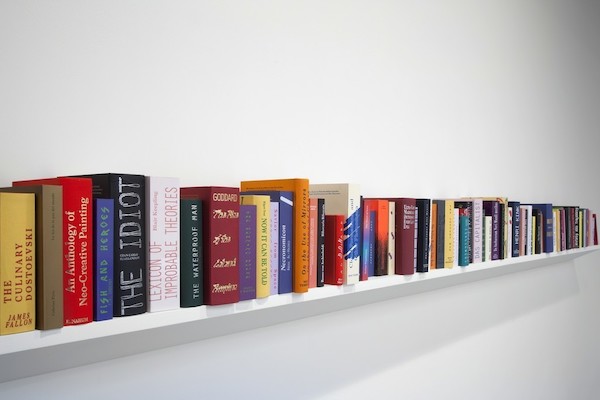Yah, sure. Everybody loves an art book. But why? When a fine art book is published, the action generates a series of exponential benefits that ripple across the art world. Here, we present ten art world leaders, specialists in their roles, to detail the intricacies of their profession and the many fascinating reasons that empower the art book and catalogue.
GALLERIST: CHARLIE JAMES
“A book, about an artist, published by an established third party and authored by a writer of note, is analogous to a major museum acquisition,” says Charlie James, “Such an art book becomes a weight-bearing beam under an artist’s career.”
Established in 2008 in LA’s Chinatown, the Charlie James Gallery has demonstrated a proclivity for discovering new artists. James recounts a very lucky meeting. “In 2014, at the Expo Chicago, a gentleman walks into my booth and becomes enamored with the Ramiro Gomez paintings. The man said, ‘If no one has written about this artist, I will.’ His business card read Lawrence Weschler. Recognizing the name of the award-winning arts writer whose books on Robert Irwin and David Hockney are highly regarded, I immediately said, ‘Let’s do it!’ Weschler pitched the book to Abrams and they published Domestic Scenes: The Art of Ramiro Gomez. The text inspired a New York Times article and heavy NPR coverage. The publication elevated everything,” says James. “We received innumerable responses. Such a book can change the profile of the artist and the gallery. It blew us up.”

“Domestic Scenes: The Art of Ramiro Gomez” cover.
COLLECTOR: TOM PETERS
“It is exciting to see a work of mine in a book,” says art collector Tom Peters. Many of the collector’s works have been showcased in print. “I was at the Serpentine Gallery in London and I discovered, under the dust jacket, the cover of the book was embossed with the image of one of my Tom Friedman’s. It was fun.”
The Los Angeles based collector began to buy art in the Eighties. His passion started innocently. “At a MOCA show, I asked, ‘Why is that painting (an Ad Reinhardt) hanging on the wall?’ The docent explained and my eyes were opened. Not much later, I bought my first piece, a Carlos Almaraz.” Today, he has amassed over 950 works of art. “Art is my passion, not my obsession. It’s very exciting. I am the caretaker of the moment as these works will live on long after I am gone. An art book is a document, an achievement, to share with friends and family.”
“I am very close to creating a book of the collection,” says Peters. “I have thought a lot about it. For over ten years. I think it’s something that collectors should do, to pass it on. Such a book is for the artist and the galleries to help establish a cache.”
Peters does not intend to present an aesthetic with the book. “It’s not a cookie cutter collection. I don’t see my aesthetic. Seasoned others do. The book is for myself, to remember the time and the story back to that moment when I first saw each piece. Each work has an interesting story to tell. I want to see what I have done over these years. And I believe I will learn something about myself, from its totality, the observation of the book.”
ART ADVISOR: MICHELLE ISENBERG
“For many collectors, buying art is a grand leap of faith. I have found that art books will ground their decision,” says Michelle Isenberg, a Los Angeles based art advisor with a specialty in large-scale art for public places. With over 200 completed projects around the world, she serves corporate clients, collections and individual collectors.
“The incredible artwork ConvergenceLA by artists Susan Narduli and Refik Anadol at the 6.2 acre Metropolis complex in downtown Los Angeles offers a real time visual narrative of the city, produced by incoming relevant data. The project began when my client at Greenland Holdings wanted to know “How would an artist visualize LA culture?” The client needed to see how an artist might conceive a goal. I brought her a copy of Art and Technology by Maurice Tuchman. The 1971 report details the LACMA program that paired artists with technology companies. That book inspired the client and produced the artwork ConvergenceLA.”
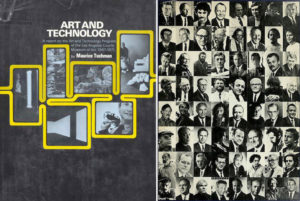
“Art and Technology” cover and interior artwork.
“I have seen where an art book can create a foundation for contemporary art history,” says Isenberg. “We produced Selections From the Naomi Feldman Collection: Los Angeles Art 1962-1988, superbly written by Sandra Leonard Starr. The book created a huge impact, as it was the first time that identified LA as an art center, predating anything that I have read since.”
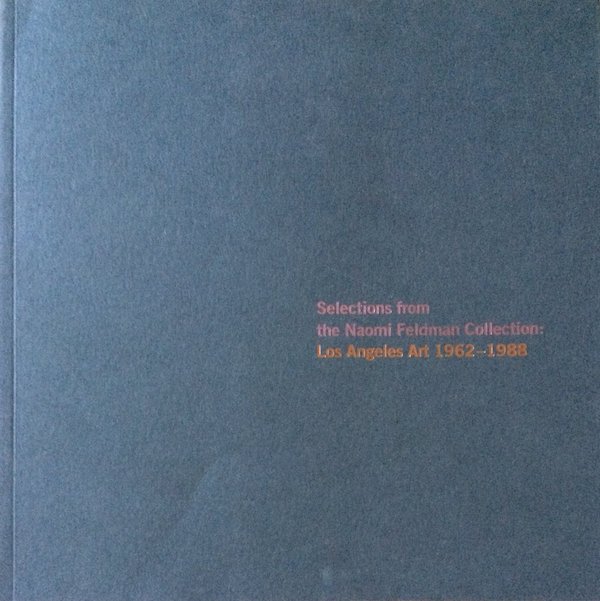
“Selections From the Naomi Feldman Collection: Los Angeles Art 1962-1988” cover.
ARTS WRITER: SHANA NYS DAMBROT
“With my background in Art History, a book essay allows me to write in the long form, with literary citations and digressions for context. It is very satisfying work,” says Shana Nys Dambrot, an award-winning arts journalist, arts writer and currently the Arts Editor for the LA Weekly. “(An art book) is a beautiful platform, which allows me to stretch. I’m able to add context that I would not be allowed in a magazine article. I can invest in biography and philosophy.”
Some of Dambrot’s most impressive books are David LaChapelle Land Scape, Mark Dean Veca: 20 Years and Idea to Object: The Art of Dave Pressler. “An art book allows me to reach an educated, international audience who are devoted to the arts and that artist,” says the writer of more than 250 book essays. “By association and idea, the art writer becomes a part of the artist’s history and those relationships grow meaningfully. When an artist says, ‘You wrote the best piece about my work, can you do my new catalogue?’ Life just doesn’t get any better than that.”
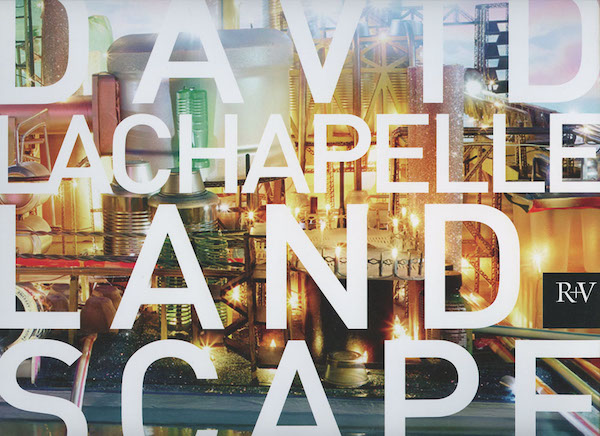
“David LaChapelle Land Scape” cover.
ART INSURANCE: WILLIAM G. FLEISCHER
“The appraisal and valuation of art is tricky,” says William G. Fleischer, CIC, of Art Insurance Now, a firm founded in 1949. “It is an argument of perspective. How do you compare or evaluate something that is incomparable? When the hammer goes down at auction, a bill of sale is a sturdy value, whereas perceived value or supply and demand are opinionable.”
“The catalogue raisonné is the key reference. More documentation is better for the artist’s work,” advises Fleischer, “It brings more exposure, better pricing and higher values. When there is a lack of evidence, such as a bill of sale, we must use forensics, a variety of factors and reference materials to determine value. Any art book, sketch book or catalogue is a tool in evaluation.”
“There was a time, from the 1940’s through the Eighties, when every show had a book or catalogue. Generally of a limited edition, these books created their own marketplace,” says Fleischer. “In the Nineties, books seemed to vanish. Today, I think books are back in vogue.” He smiled, “What lasts longer? The art work or the book?”
BOOK DESIGNER: ROY BROOKS
Roy Brooks is a designer of books about art. He appreciates “the solidity of the printed book and the material aspects of bookmaking.” In our digital world, which can vanish instantly with the blink of an EMP attack, the printed book will stand the test of time.
Brooks is a lone eagle, working without subordinates. “Book designing requires an intense focus with a command of a million details and clear communication. I prefer to work directly with an editor and the artist,” says Brooks. “Some jobs require committees, directors and trustees. Then again, when I was designing Jasper Johns: Gray for the Art Institute of Chicago, we communicated through many layers of intermediaries and the book turned out great.”
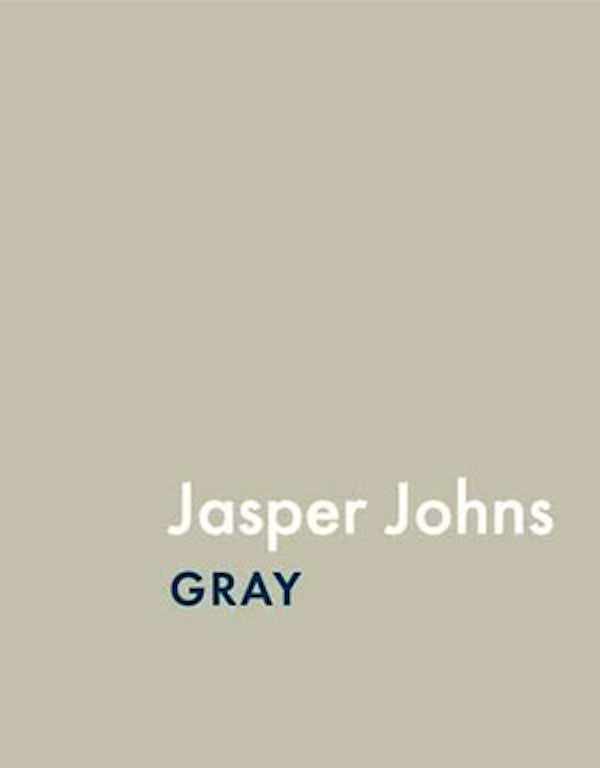
“Jasper Johns: Gray” cover.
At his FoldFour.com, Brooks has designed over forty books for clients such as the Princeton University Press, Rizzoli books and the Metropolitan Museum of Art. “The initial design phase of a book, finding the concept, is time-consuming and nerve-wracking. It is a series of fits and starts. Ideas become sketches and sketches might become a concept. I must stay true to the artist’s content without placing my style into their work,” says Brooks. “This is the time when I do my research. Learning new aspects of an artist’s history will shift my perceptions and enhance the conceptualization of the book. When I was designing Roy Lichtenstein: A Retrospective, I really got into a study of his work and I found it illuminating. I had never realized how conceptual he was. These are the great moments in my work.”
In Part Two of this article, gallerist Catharine Clark, artist Kim Dingle, publicist Jennifer Gross, bookseller Michael Delgado and Hammer Museum curator Allegra Pesenti detail the exponential benefits of the art book. Click Here.
_________________________________________
GORDY GRUNDY is a long time arts writer and art book publisher. www.GordyGrundy.com

